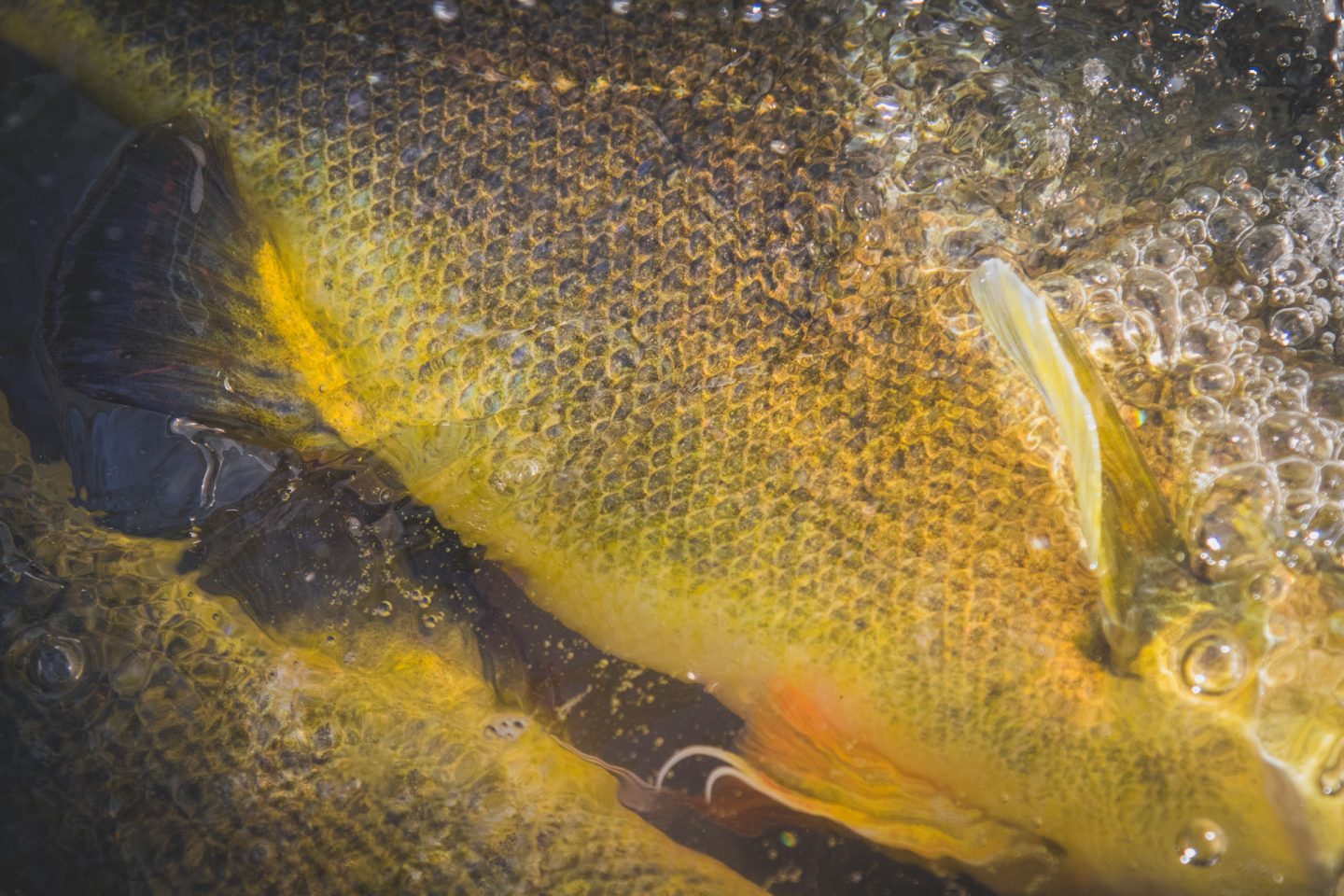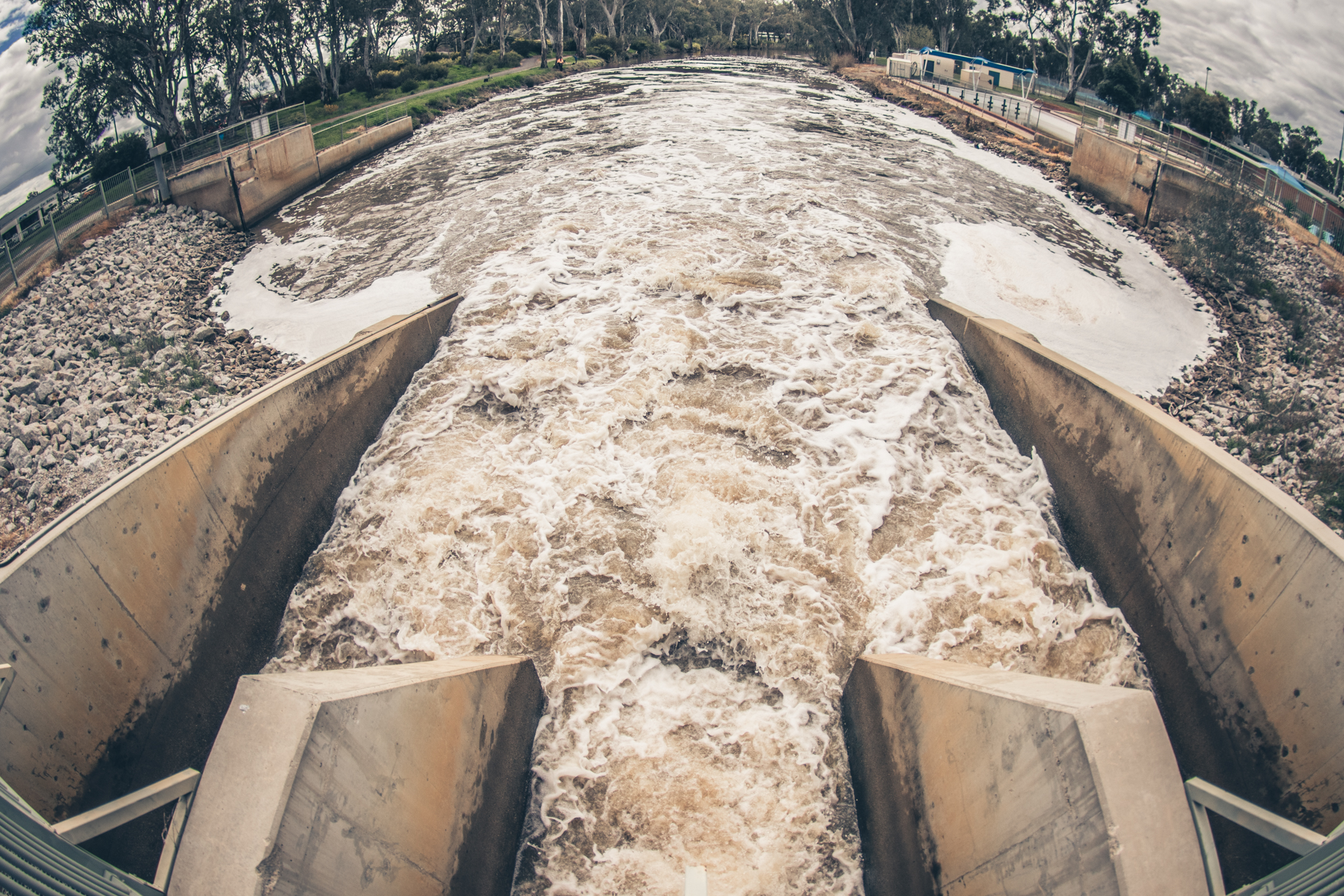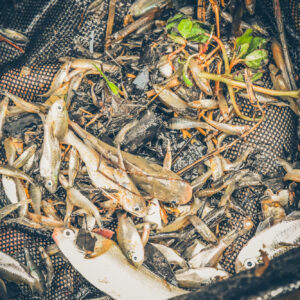Counting the cost: scientific evidence of fish losses in Australian rivers

What is the evidence of fish losses in Australian Rivers? It’s a question that gets asked a lot, so here’s the answer.
By Craig Boys and Tom Rayner
Australia has some of the world’s best data on fish losses at water diversions, which gives a good insight into the scale of the problem. However, there are still some important knowledge gaps that need to be filled. We summarised the available evidence in a peer-reviewed study.
Some of the key points from the paper are as follows.
Gravity-fed diversions
Large losses of fish occur at gravity-fed water diversions, which are relatively common in the southern Murray-Darling Basin.
- A pump-out of a floodplain regulator at Barmah forest returned 15,800 small-bodied and 434 large-bodied natives (Jones and Stuart 2008).
- More than 10,000 native fish comprising 10 different species were found in the channels of the Murray Valley and Torrumbarry Irrigation systems, including six threatened species (O’Connor et al. 2008).
- Population estimates of native fish diverted below a small hydropower plant on the Mulwala Canal (Murray River system; ‘The Drop’) exceeded 950,000 individuals (Baumgartner et al. 2007).
- Around 5 million cod larvae and over 16 million golden perch and silver perch eggs were estimated to be lost at five main irrigation schemes in an average irrigation season (Gilligan and Schiller 2003).
- O’Connor et al. (2008) sampled significant numbers of Murray cod, golden perch and silver perch larvae being diverted at channels on the Murray River.
- On the Murrumbidgee River, at the main irrigation channel off Berembed Weir, 28 larval Murray cod per megalitre of water diverted were captured during November, the peak time for downstream drift of this species (Baumgartner et al. 2007).

Water flows through a regulator near Cohuna, Victoria.
Pump diversions
There are four published studies of fish losses at pump diversions.
- The first sampled larval and adult fish at two pump stations (max. capacity 35 and 150 ML/d) on the regulated Namoi River, and found 232 fish (70% native, 30% alien species) were removed per day. The sampled rate of fish loss equating to approximately one native fish per megalitre of water diverted (Baumgartner et al. 2007, Baumgartner et al. 2009).
- The second study sampled the entire volume of water diverted at an experimental pump (35 ML/d), also on the regulated Namoi River (Boys et al. 2012, Boys et al. 2013b). An average of 3.5 native fish per megalitre were diverted.
- The third study examined a 300 mm diameter intake pipe at Oakey Creek, an unregulated system in the Condamine catchment, Queensland (Norris 2015). Over 9,000 Australian smelt were extracted in a single afternoon.
- The final study documented native fish losses at Hattah Lakes in 2014 (Brown et al. 2015). The vast majority of fish passing the pumps (75%) were injured by de-scaling, decapitation or exophthalmia (a type of eye injury).

A pump station on the Namoi River, NSW.
Population impacts
Once fish are entrained at a diversion, they are removed from breeding populations forever and the impact therefore accumulates over successive generations. Irrigation channels are typically unsuitable for fish due to their lack of permanent water, poor water quality, high bird predation rates and a lack of suitable habitat (Redding & Midlen 1991).
So, while large numbers of larvae may drift into irrigation systems, it is rarer to capture these fish surviving in storage dams beyond a year old (Baumgartner et al. 2007; O’Connor et al. 2008). If passing through pumps, many fish do not survive (Brown et al. 2015). Therefore, early suggestions from government fisheries agencies that irrigation channels would make good nurseries for fish (Narrandera Argus & Riverina Advertiser 1946) are not valid in most instances.
In some countries it has been reported that the number of fish lost at diversions is generally positively correlated to volume of water extracted (Moyle & Israel 2005). Therefore, knowing what proportion of river flow is being extracted and combining this with what information is available on fish losses at gravity-fed and pump diversions can allow predictions to be made about fish population impacts in Australia.
At the major Mid-Murray River diversions mentioned previously, using the data of Gilligan and Schiller (2003) we conservatively estimate that due to extraction there would be 580 000 to 1.2 million less fish surviving to 12-month old fingerling stage (depending on whether mean annual loss or maximum annual loss values are used). These figures account for baseline mortality that may occur naturally: that is, 10 cod larvae or 200 drifting perch eggs only produce one fingerling (C. Todd, pers. comm., 2019).
For perspective, 1.2 million fingerlings is 1000 times the number of fish stocked into that reach over the past 5 years, and approximately 75% of average annual stocking efforts across NSW by government (2015–2020 NSW DPI stocking data).

Fish eggs used in screening experiments.
Large-scale impacts of pumped diversions are more difficult to calculate, because pump operations vary. However, sheer number of pumps suggests the impacts are lager. In NSW alone, there are over 4,500 licensed pumps ranging from 200-290 mm diameter, with extraction rates of 10 to 220 ML/d (DOI Water unpublished 2015 data).
Using conservative (3.5 fish per ML, Boys et al. 2012) and a high (887 fish per ML, Norris 2015) fish extraction rates, together with the previous example of 768 000 megalitres used by pumped irrigation in the NSW portion of the northern MDB in 2018–2019 (less 25% of the volume due to riverine transmission losses), the loss of native fish in the NSW northern MDB alone could be between 2 and 510 million a year.

Irrigation pumps in NSW.
Conclusion
Even using the lowest estimate lowest estimates, water diversions are likely to be having a huge impact on the sustainability of native fish populations in Australia.
In almost all cases, diversion from a watercourse is a one-way trip for fish, removing them from breeding populations forever. We can argue that more evidence is needed, or split-hairs over the data, or we can just get on with fixing the problem. Visit our screens page to find our more about the different types of screens that are available. These can be adapted or combined to screen any type of diversion.








